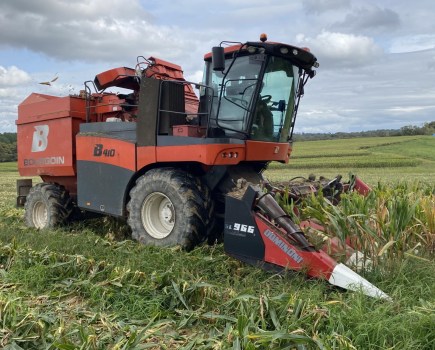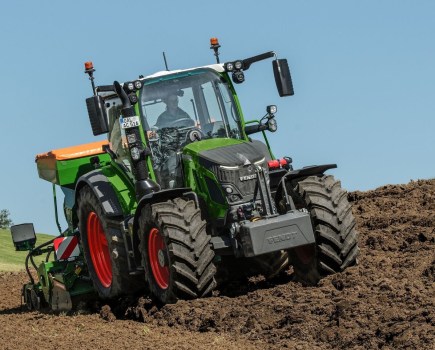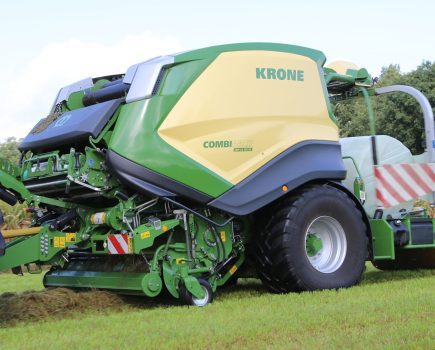Combine harvester manufacturers spend millions developing and testing new models. Snapped at a secret location in East German, this picture is of a field test with the latest T-Series combine.
Powered by its own engine, the test rig towed behind the combine collects all the material coming out of the rear – the top conveyor for the straw and everything from the separator and the lower one for chaff from the cleaning shoe. When the driver is satisfied the test combine is running optimally, a full revolution of the test conveyors is made to create a ‘snap shot’ of the harvesting process, after which the combine stops.
It is then over to the second combine, which up front is fitted with a collection box. While based on a WTS, all the original threshing systems have been swapped for special ones to pluck every last grain lost out the back of the T.
Precise details are off limits, but what we can disclose is that as many as 20-30 readings taken a day with the combine set up for different grain outputs per hour. Different headers and cleaning systems are used during the test. The information is used to plot grain loss curves. Weather stations measure wind speed, temperature and humidity, and the calculations even take account of sunlight.
Similar test rigs, and some different versions, work all over the world in North and South America, New Zealand and Australia. Part of John Deere’s product validation and verification programmes, they are all used in a multitude of crops including wheat, barley, OSR, sunflowers, soya, and maize grain. However, don’t try to find one of them. The preference is for large farms, and all machines and equipment are locked away and guarded at night.
But the next time you are in the market for a new combine spare a thought for all the thousands of hours of R+D and engineering costs that have gone into making it to ensure the grain ends up in the tank and not chucked out the rear of the machine.




